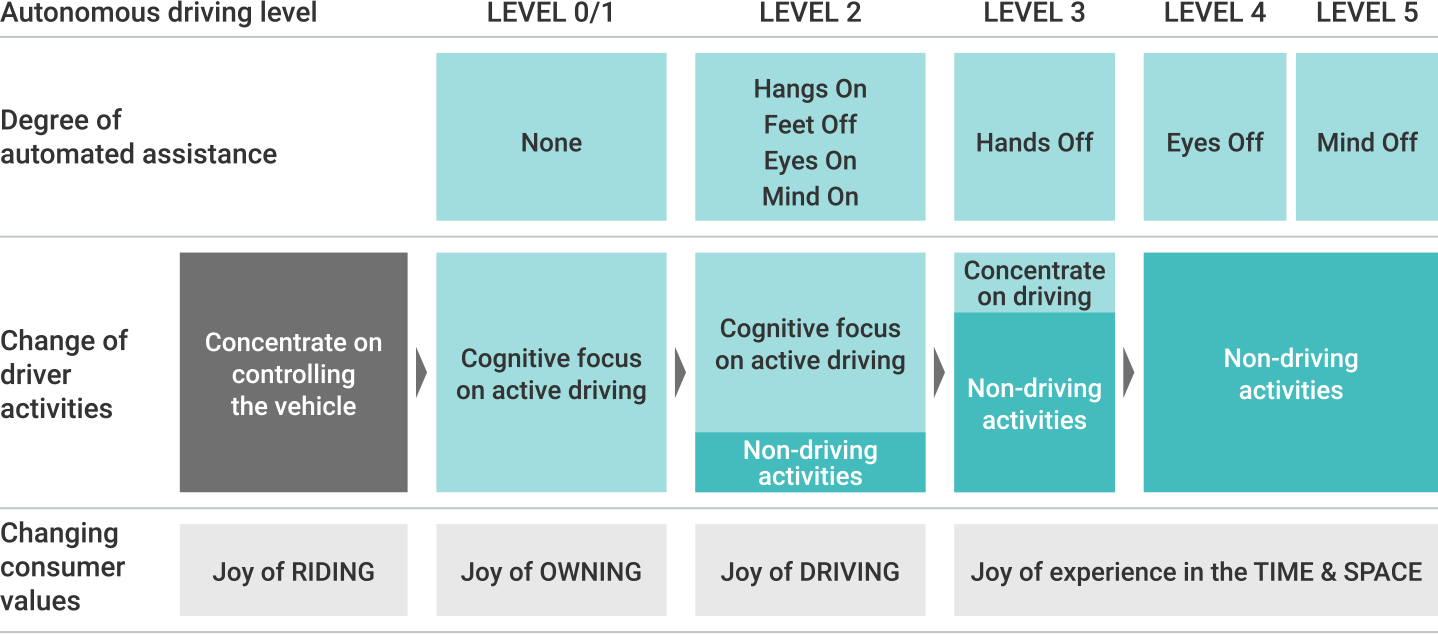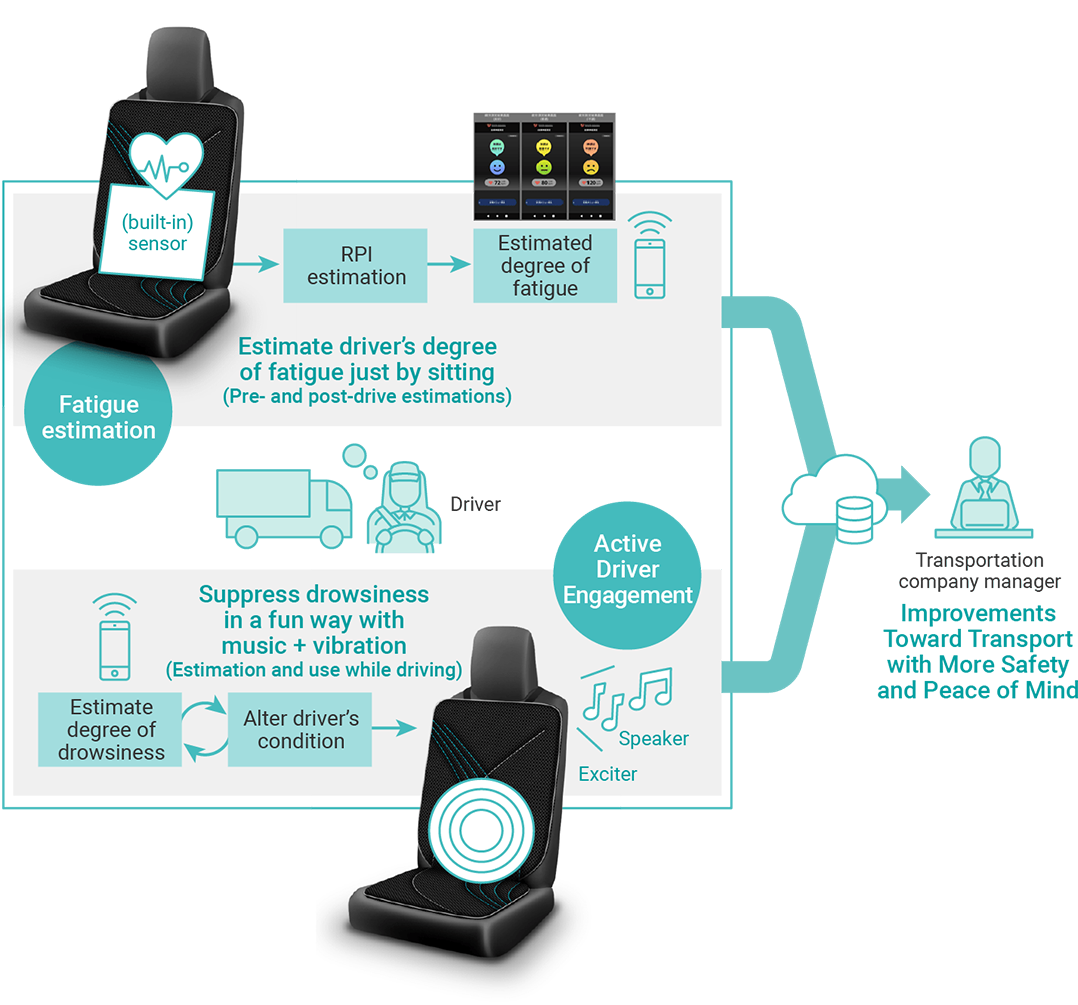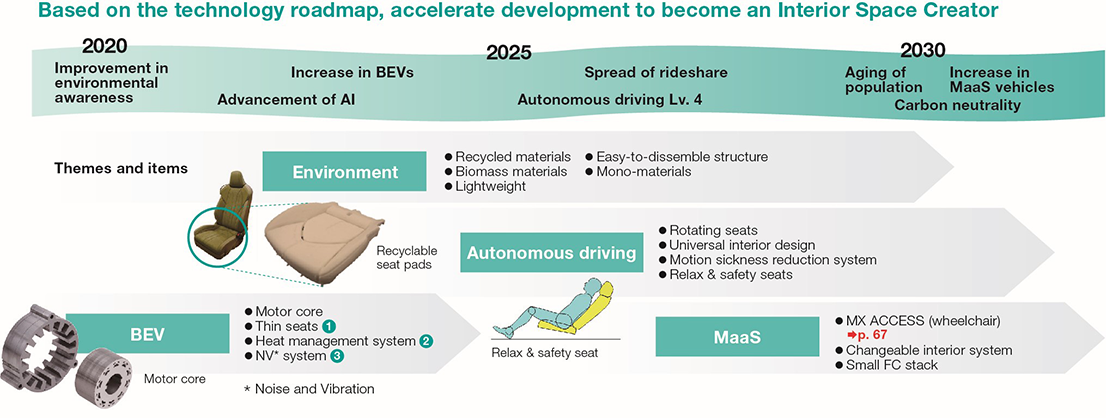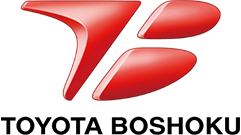Pursuing comfort and safety in the automobile interior space in line with the evolution of autonomous driving
Practical application of autonomous driving technology
Autonomous driving technology continues to be put into practical application. The Society of Automotive Engineers (SAE) of the United States classifies autonomous driving into six levels, from Level 0 to Level 5, and Japan’s Ministry of Land, Infrastructure, Transport and Tourism has also adopted this level-based system.
Automation Level 1 is widely adopted as a driver assistance system, which provides assistance functions such as warnings to the driver by utilizing on-board sensors and cameras. Automation Level 2 is a partially automated driving technology adopted by many automakers, and contributes to improved safety and comfort by allowing the vehicle’s steering and accelerator to be controlled by the system in specific situations. Both Level 1 and Level 2 are positioned as Advanced Driver Assistance Systems (ADAS). Automation Level 3 realizes conditional driving automation, and helps to alleviate the burden on the driver by allowing the driver to let go of the wheel in certain highway situations.
Automation Level 4 (full driving automation under certain conditions) and Level 5 (full driving automation) have not yet been put into practical in Japan, as of 2024. However, as these systems are put into practical application going forward, “non-driving activities” in the automobile interior space are likely to become increasingly sought after.

Pursuing non-driving activities through various approaches
We take a variety of approaches to provide a more comfortable and safer automobile interior space.
1) Relax & safety seats
We are working on the development of seats that allow the occupant to assume relaxed or sleeping postures, which are expected to be in demand for fully autonomous driving in the future. By measuring and analyzing the effects of various conditions as well as examining the seat structure, we aim to achieve both comfort for passengers and a reduction in collision energy, and to realize an automobile interior space with greater freedom.


Exhibited at Automotive Engineering Exposition 2023 YOKOHAMA
Related information
2) Active driver engagement system
We have developed an IoT seat cover equipped with a system that estimates the driver’s state of fatigue and suppresses drowsiness. The fatigue estimation system uses sensors built into the seat cover to estimate the cardiac beat-to-beat interval (RRI), making it possible to estimate the degree of fatigue simply by the driver sitting. The active driver engagement system detects the driver’s eye and head movements with a special in-vehicle camera, and the seat cover vibrates and music plays according to the estimated drowsiness level. When linked to a smartphone app, the results of fatigue and drowsiness estimation during driving can be sent to the transportation operations manager in real time.
Starting in 2022, we have been conducting demonstration tests of the system for transportation companies, analyzing driving routes that are less likely to cause drowsiness and fatigue for truck drivers and the timing of rest breaks, as well as verifying the effectiveness of the system as a whole and making improvements. Based on the accumulated data, going forward we will help to further alleviate the burden on the driver and achieve driving with greater safety and peace of mind.



Exhibited at Automotive Engineering Exposition 2022 YOKOHAMA
3) Rideable Attraction “MOOX on FC Bus”
Looking ahead to the spread of Mobility as a Service (MaaS), we have developed MOOX on FC Bus, a rideable bus attraction that provides added value by offering various services during the traveling time.
In MOOX on FC Bus, transparent displays that deliver augmented reality (AR) games and live performances are mounted on the vehicle windows, and the seats vibrate and scents are diffused in conjunction with the images. The AR images change according to the vehicle’s location of travel and the gestures of the passengers, providing an interactive experience. This makes full use of Toyota Boshoku group’s control technology for real-time delivery of content and information aligned to the vehicle’s location data. We have also developed a Tailored Space System offering detachable and interchangeable functionality for the seats and interior items, enabling use of the space for a variety of services including business and entertainment. We also have our sights set on the aftermarket, and envisage monetization through the replacement of seats and interiors.
In February 2022, we carried out a demonstration test of MOOX on FC Bus at Aichi Expo Memorial Park. In 2023, we unveiled MOOX-RIDE, a mobile entertainment experience bus, at the JAPAN MOBILITY SHOW 2023.
Related information
System development utilizing MOOX technology
MOOX on FC Bus implements a system to visualize passenger behavior in order to provide services and content tailored to their attributes. And as part of the R&D process, we also developed a system that can be used for applications other than automobiles.
The developed system visualizes the behavior and attributes of facility users through the composite processing of data collected by multiple sensors and cameras installed in the facility. Using this system, we started providing attribute data and other services to Central Japan International Airport Co., Ltd. Data acquired from Wi-Fi packet sensors, headcount sensors, and attribute estimation sensors utilizing facial recognition cameras installed in the airport are processed in a composite manner to visualize visitor behavior, purpose of visit, time spent in the facility, utilization ratio by area, headcount, gender, age, emotions, and other attributes. This initiative was launched in cooperation with Central Japan International Airport Co., Ltd., Nagoya University, and Toyota Central R&D Labs, Inc. with the aim of drawing up measures to enhance commercial opportunities and satisfaction levels at the airport. Following demonstration testing, the live service was rolled out and is currently being used as a paid service.
Through the provision of such services, we aim to further advance the technology and link it to use in future mobility.
Technology roadmap
Our vision is to “create tomorrow’s automobile interior spaces that will inspire our customers the world over,” and we are formulating a technology roadmap to realize this vision.
This technology roadmap details our offered products, which meet the needs of customers and the demands of society, and sets out a development direction that connects the company’s vision to the products, and to their constituent components and elemental technologies.
Having defined the three spaces we must realize and the two essential technologies that support them, we are creating the required products and technology items, and are promoting development in line with customer needs and trends.
This approach enables us to provide our customers with products that meet market needs in a timely manner.


 Media site to convey the Toyota Boshoku group vision for the future and initiatives
Media site to convey the Toyota Boshoku group vision for the future and initiatives



